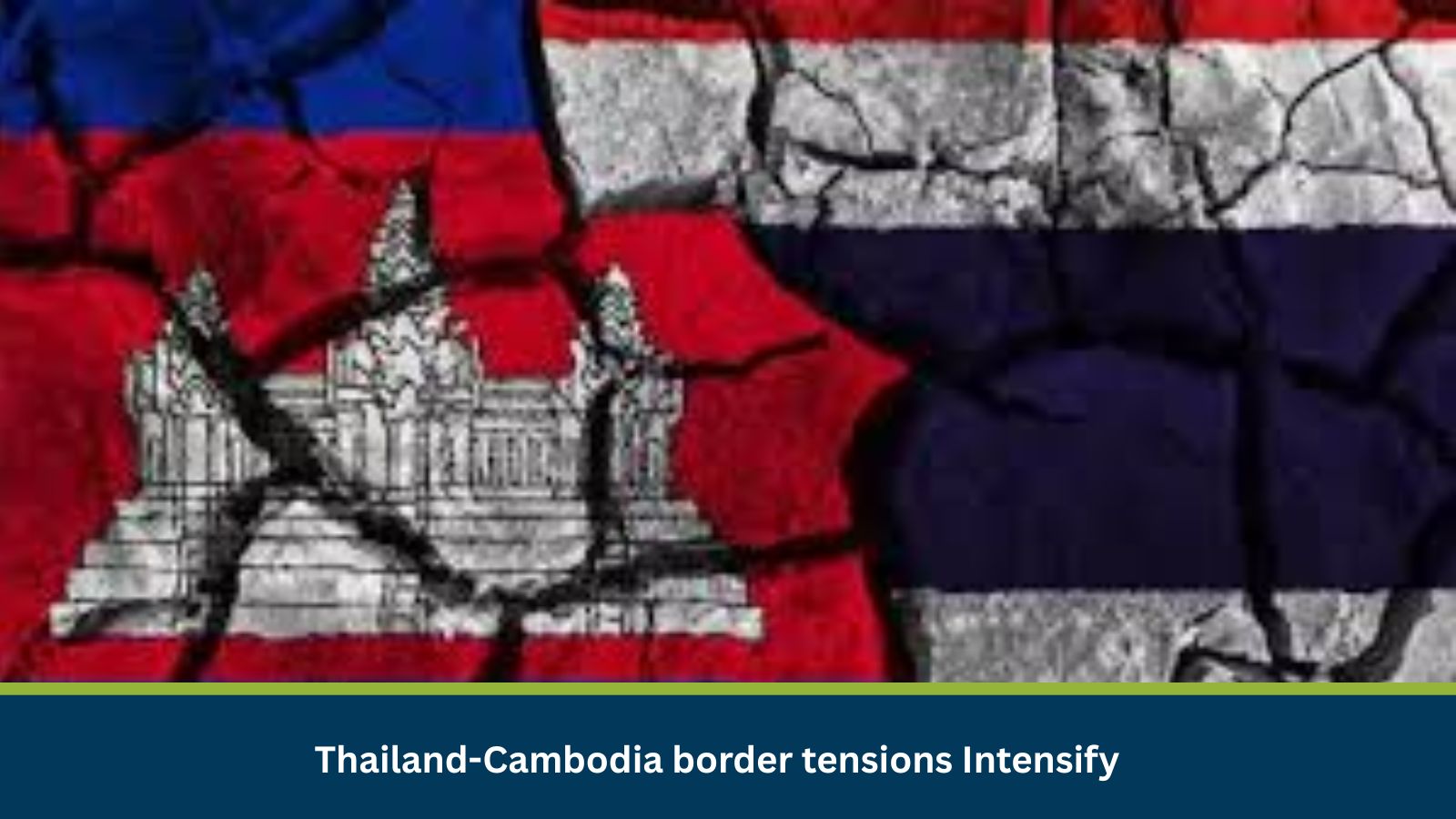Escalating Thailand-Cambodia border tensions pose a high risk of localized conflict and significant disruption to cross-border activities. This situation is critical to monitor for security, business continuity, and human safety due to persistent clashes and their impact on logistics and trade.
What is Risk Analysis in the Context of External Threats Events?
External threat risk assessments evaluate geopolitical tensions, conflicts, and interstate disputes that can impact regional stability, cross-border operations, and human security. They are crucial for preparedness, mitigation strategies, and ensuring resilience. The current Thailand-Cambodia border tensions are a direct manifestation of such threats. Historically, similar confrontations, particularly around the Preah Vihear temple complex, have shown a propensity for rapid escalation, border closures, and significant casualties.
Executive Summary
- Date of Incident: 28 July 2025
- Location: Thailand-Cambodia border, Cambodia, Thailand
- Risk Category: External Threats
- Severity Score: 4/5
- Confidence Level: 85%
Analysis of the Thailand-Cambodia border tensions, as reported on 28 July 2025, indicates a high-severity, short-to-medium-term risk scenario. Despite ceasefire talks, clashes persist, drawing parallels to historical confrontations near the Preah Vihear temple. Based on past incidents with rapid escalation and casualties (e.g., 12-33 deaths), heightened intensity is likely for three to seven days. Such conflicts, though localized, quickly disrupt cross-border activities, necessitating immediate operational adjustments. Underlying territorial disputes mean renewed flare-ups remain a persistent threat, requiring ongoing monitoring. Our assessment highlights significant impact on logistical arteries and human safety, with likely continued military engagement before sustained de-escalation.
Known Hotspots and Sensitive Areas
The most sensitive and historically contested area is the Preah Vihear Temple complex, a UNESCO World Heritage site, situated on the border. Other vulnerable areas include major border towns and crossing points in Thailand’s Sa Kaeo, Surin, and Sisaket provinces, and Cambodia’s Banteay Meanchey, Oddar Meanchey, and Preah Vihear provinces. These areas have been central to past conflicts.
Impact on Transportation and Services
- Road Closures: Key border crossings like Aranyaprathet-Poipet and Chong Chom-O Smach are highly susceptible to closure.
- Transport Disruption: Land transport is severely impacted by border closures, affecting commercial trucking, passenger buses, and private vehicle movement, thus disrupting the flow of goods and people essential for trade and tourism. Airports and major rail lines inland are generally unaffected unless conflict escalates significantly.
- Utility Damage: Sustained military engagements historically lead to damage to local utility infrastructure, including power lines, water supply systems, and communication towers, causing localized outages near conflict zones.
- Business Operations: Significant disruption to cross-border trade, tourism, and local commerce near border regions due to closures and insecurity.
Recommended Actions
- Personnel Safety and Travel Directives: Immediately implement a ‘no-travel’ directive for all personnel within 100km of the border. Establish a mandatory daily check-in system for employees near these zones.
- Supply Chain and Logistics Rerouting: Proactively reroute critical cross-border logistics via alternative shipping methods (e.g., sea/air cargo). Activate contingency plans with backup suppliers outside the immediate conflict zone.
- Asset Vulnerability and Operational Contingency: Conduct urgent vulnerability assessments for physical assets within 50km of the border. Implement enhanced security, preparing for partial/full temporary shutdowns and ensuring critical functions via remote work or disaster recovery sites.
- Crisis Communication: Establish a dedicated internal Crisis Management Team (CMT) for daily updates. Disseminate clear communications to external stakeholders regarding potential service impacts and delays.
Emergency Contacts
- Police: 191 (Thailand), 117 (Cambodia)
- Fire Department: 199 (Thailand), 118 (Cambodia)
- Ambulance: 1669 (Thailand), 119 (Cambodia)
- National Emergency: N/A
Official Government Websites:
- Ministry of Foreign Affairs (Thailand): https://www.mfa.go.th/en
- Ministry of Foreign Affairs and International Cooperation (Cambodia): https://www.mfaic.gov.kh/
Final Thoughts
The baseline scenario anticipates continued localized skirmishes and intermittent border closures. A moderate escalation could intensify clashes, broaden closures, and increase civilian displacement. A severe escalation risks widespread conflict, large-scale offensives, and significant infrastructure damage, potentially leading to supply chain collapse and major reputational damage. Businesses must prioritize personnel safety, secure assets, and maintain agile supply chains. Ongoing monitoring of the situation is paramount for informed decision-making and operational resilience.
Stay ahead of operational risks with real-time alerts, scenario modeling, and expert advisories with datasurfr’s Predict.
MitKat helps organisations navigate uncertain times by providing comprehensive insights about the evolving risk landscape. We offer various services including Risk consulting and Security Design, Protective Services, and cyber security services which ensure organisations become Risk Intelligent. Our AI-powered operational risk monitoring tool, datasurfr combined with expert insight enables companies to stay abreast of evolving operational risks and emerging developments.






